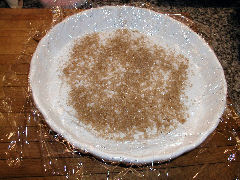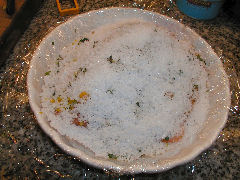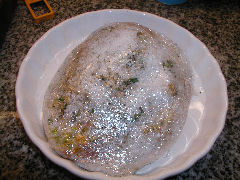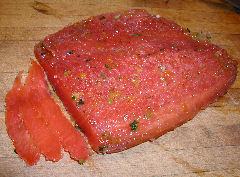“Whoever would be cured of ignorance must first confess it.”
– Michel de Montaigne, 16th Century French Philosopher and Writer
Buenos Aires – There must be something in the air related to time and energy. Sally over at A Broad in Costa Rica just posted on the confusion over not having daylight saving time, in regard to dealing with places that do. Susanna at La Otra Dimenión is dealing with not only a multi-day gas shut-off (a common occurence here), but her personal upset over our local government illogic on energy policy and daylight saving time.
While I understand the reasons behind DST, I like not having time changes – I never could quite get the hang of them. And I’m old enough to remember when we didn’t have them nationwide, and time changes were all based on state and local decisions, leading to a lot of nonsense. Many folks don’t remember or realize that for the U.S., DST didn’t become a national policy until 1966 when Lyndon Johnson made it federal law with the Uniform Time Act. Of course, there was an exemption clause – any state could negate that with it’s own law – and Hawaii and Arizona promptly did so, except the part of Arizona that’s within the boundaries of the Navajo Nation, which does follow DST. Indiana is split in different time zones, one part of which follows DST and one doesn’t, historically, though I believe that’s recently been resolved. Puerto Rico decided against it.
But that’s not the limit of governmental screwing around with our clocks. In 1974 Richard Nixon signed into law the Emergency Daylight Saving Time Energy Conservation Act of 1973 (no doubt having to change the name of it to the Act of 1974 would have involved re-introduction to Congress and re-debating the entire issue), which changed our clocks for a 15 month period in order to help treat the energy crisis at the time. And now, our current prez, GWB, has changed the whole thing – see, amidst all the trivial stuff like Iraq invasions, military tribunals, and striking down the Geneva Convention, he slips in something that really effects our daily lives – he’s changed the dates that DST goes in and out of effect. Now, I don’t know why he did it. I know there have been numerous reasons repeatedly proposed over the years since 1966 – extending past Halloween to make it safer for children to be out trick-or-treating; AM radio stations losing revenue because they lose an hour of their most profitable time slot, the morning drive time; evening voter turn out for elections (nah, that couldn’t be it… GWB doesn’t rely on voter turn out for his votes); oil conservation; less violent crime; university students rioting because they lose an hour of drinking time once a year (now, that could be it for the Frat Boy in Chief…).
Did you know that if you’re on an ontime Amtrak train when the time changes, they simply stop for an hour wherever they are so that they don’t get to the next station ahead of schedule? Apparently that’s considered less of an inconvenience to customers overall than having one day a year with a different schedule. And, of course, there’s nothing they can do half a year later when they lose an hour – they simply show up an hour late to the rest of the stops down the line…
All of this relates to some sort of swirling back of mind stuff about prevention versus cure and vice versa, much of it brought on by having just watched the film Inconvenient Truth, about the global warming problem. It’s a fascinating look at it, and interestingly, Al Gore, who narrates it (it’s based on his book of the same name), manages to make the entire hour and a half completely engaging. If he’d have been that animated and passionate during his campaign, he’d have won by a landslide. I guess it’s a case of being in a more comfortable element for him – the front of a lecture hall. If you haven’t seen the film, do. I’m going to go watch it again.
And all this brings us completely tangentially to a different kind of cure, and to one of the few cases where curing is far better than preventing. Cured salmon. Gravlax.
Now, there are subtle differences in the world of cured salmons. There is smoked salmon of many varieties – some cold-smoked, some hot-smoked, some brined first, some not. Somewhere within that range there is lox, that deli favorite, which is brined and then soaked to remove the salt, and then, some folks don’t smoke it and some folks give it a light, cold-smoking. There’s a lot of argument over which is more traditional. There’s a definite difference in flavor. But the one version that is definitely not smoked is Gravlax. Back in the Middle Ages of European history, gravlax came into being when Scandinavian fisherman preserved their salmon catch by lightly salting it and then burying it in sand above the high-tide line. Grav meant hole in the ground (think “grave”), and lax meant salmon (and where we get the name “lox” from), so there you have a buried salmon – which, of course, fermented while it was in the ground.
While I might be interested in some time trying out that version, I’m much more a fan of the modern process of simply curing raw salmon in salt, sugar, and dill. Over time I’ve worked in various restaurants where we made our own, and there are as many variations on the recipe as there are people making it. Here’s my step-by-step version, at least for this week:

Line a pan big enough to hold the salmon (thick filet is best) with plastic wrap – enough to fold over the salmon and wrap it completely – then cover with a layer of coarse salt just larger than the filet, followed by a layer of coarse brown sugar (about half the volume of the salt).

Cover this with a layer of coarsely chopped citrus peel (I used 1 lemon, 1 lime, and 1 orange for this filet), and chopped herbs (traditional is dill, but you can use whatever you want – here I used parsley and thyme). Sprinkle that layer with a little bit of ground white pepper, and some sort of brandy – I used grappa.

Make sure the salmon filet is skinned and boned. Leave a little bit of the belly fat on it, it will melt in the process and add to the flavors. Place the filet on top of the bottom “crust”.

Do the same process, in reverse, to create a top coat.

Wrap tightly in the plastic, and place the whole thing in the refrigerator. On top, put a flat plate or another pan that fits inside the first one, with some weight on top of it (I used a small dinner plate with a couple of cans sitting on top of it – you want some pressure to help force moisture out of the filet.

I usually let the salmon cure for 2½-3 days. About halfway through the process, flip the whole thing over and then re-place in the refrigerator with the weighted plate back on top. When it’s ready (don’t go more than 3 days, it’ll get too dried out), remove it from the refrigerator, unwrap it, and it will look like this.

Scrape the coating off, slice, and eat.
This process can be used with pretty much any firm-fleshed fish, but you’ll have to experiment with flavors and timing to get the results you want. I once made swordfish this way, I don’t remember the combination of citrus and herbs I used off-hand, but keeping an eye on it, and poking it to see how firm it was getting, it cured in a bit under two days. The thickness of the filet will also have an effect on that.
I’d forgotten how good homemade gravlax can be. Sometimes, when you can cure, you just simply don’t want to prevent….
Thank you for the history of DST – I’m linking to my article! And I can’t wait to try the gravlax, we are big salmon fans over here. Sending it to my mom, too. I think she will love it, too.
[…] Next up, as you might recall, I’ve been playing around with some cured fish. Originally planned as a salmon gravlax, it turned out that one of last night’s guests was allergic to salmon, so I decided to try something different. I found some nice fat gatuzo fillets. While the process is the same as in the link above, the cure is a trifle different. First, the fish isn’t near as oily or thick as salmon, so only about 24 hours was needed to completely cure it. Second, I went with a somewhat simpler flavoring. I’m not sure why, but it popped into my head that “burnt orange” would be an interesting flavor with the gatuzo. So, caramelizing the peels of a couple of oranges became the first order of business. That, some chopped cilantro, and a splash of triple sec for the liqueur were the “inner” coating; the outer was a mix of light brown sugar and coarse salt. Then scrape the coating off, rinse lightly, and slice into thin slivers. I served the fish atop a dandelion green salad dressed with a mustard-orange dressing (the juice from the two burnt oranges, ½ teaspoon mustard powder; 1 teaspoon salt, equal volume of olive oil to the juice). Some finely julienned daikon and toasted sesame seeds topped the display. I liked the dish a lot, but I noted that only about half the folks who were here at the fish, so perhaps it wasn’t as good as I thought it was. […]
[…] off with a “buried in salt” sort of cure, more or less the same as I do when I want to make gravlax. I thinly sliced peceto, or top round, coated both sides in a mix of orange and lime peel and […]
[…] salmon is to cure it – make gravlax. I’ve posted on the step-by-step procedure I use, quite a while back, and have been playing around with different herbs and such. In this case, I gave it a touch of […]
[…] any. The bubbles are fine and abundant and give a lovely mouthfeel. It paired up wonderfully with homemade gravlax cured with citrus and dill, and, in fact, I’m nibbling away at the last of that as I sip the […]
[…] had to start with some homemade gravlax, cured with citrus and dill, served over slices of oven roasted potatoes, a salad of local greens […]
[…] fish recently. For this dinner I decided on swordfish. The curing process is much the same as making gravlax, except that instead of fillets I used steaks – fillets would be better, but just not the way […]
[…] really need some long narrow rectangular plates for dishes like this, but, so be it. On the left, gravlax style cured surubí, a freshwater Brazilian tigerfish, using cilantro as the herb and a mix of lemon, […]
[…] to it, but delicious. We cured a fillet of lenguado, sole, gravlax style more or less (I have a step by step version with salmon here) – with just coarse salt, raw sugar, and ground coriander seed. It’s a delicate fish, […]